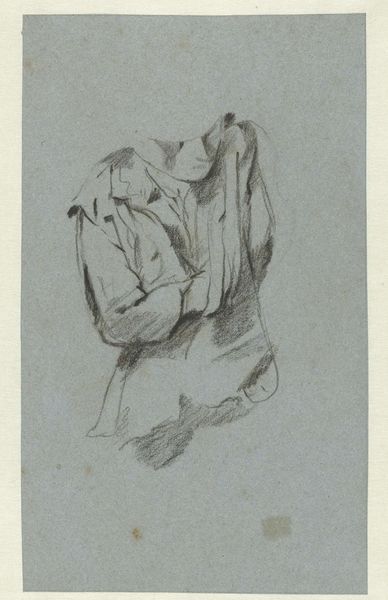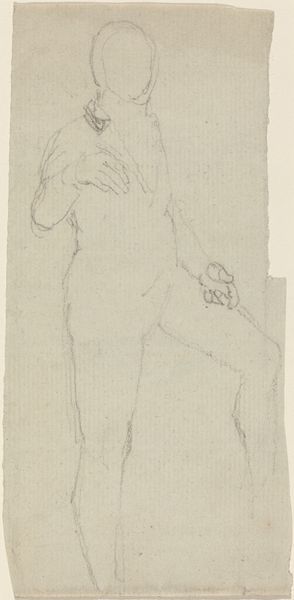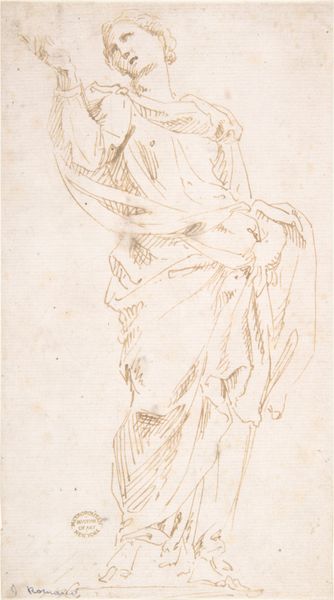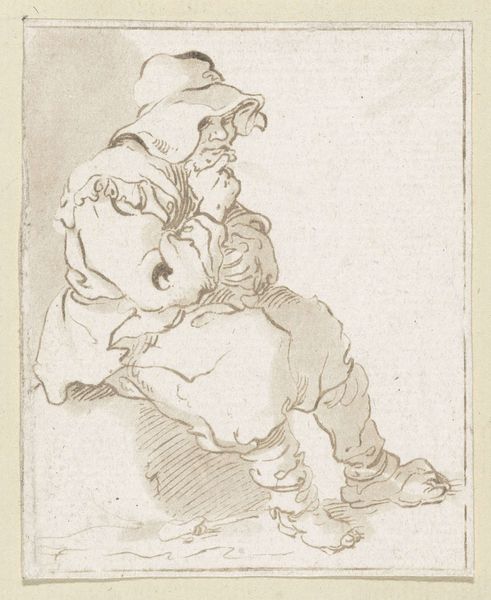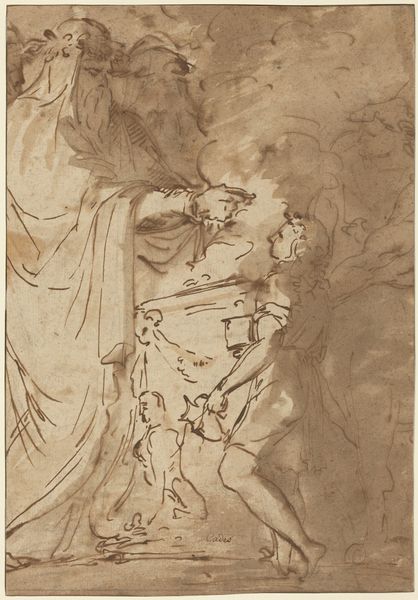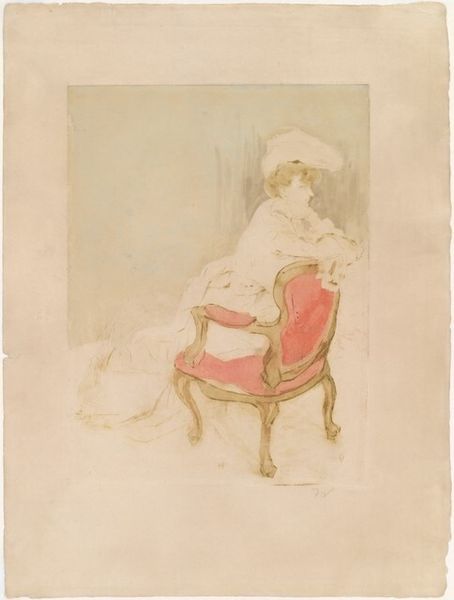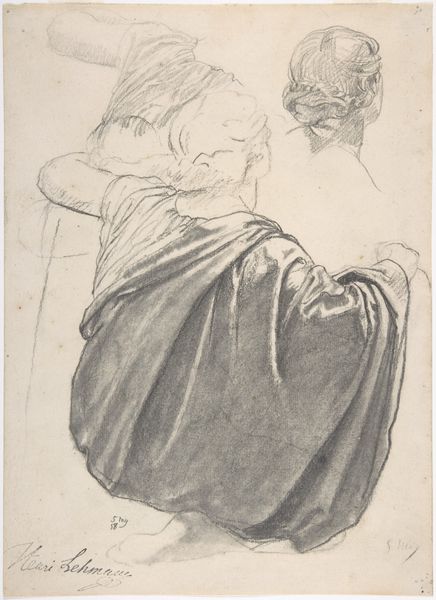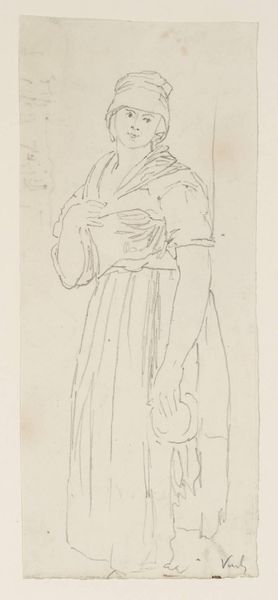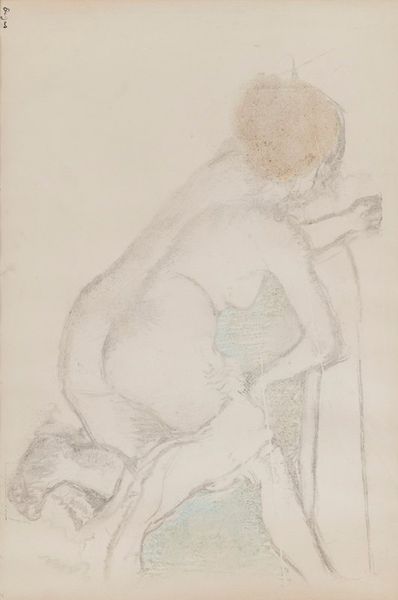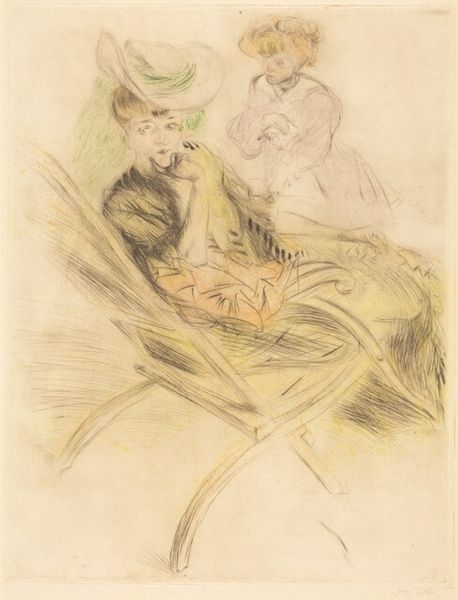
print, etching, intaglio
#
portrait
#
art-nouveau
# print
#
etching
#
caricature
#
intaglio
#
caricature
#
figuration
#
genre-painting
Dimensions: plate: 46.1 x 34 cm (18 1/8 x 13 3/8 in.) sheet: 64.2 x 49.1 cm (25 1/4 x 19 5/16 in.)
Copyright: National Gallery of Art: CC0 1.0
Curator: Jacques Villon's etching from 1902, titled "La Nouvelle Parisienne (23)", offers a glimpse into Parisian society at the turn of the century. Editor: My first impression is one of subtle irony. The sketch-like quality, combined with the rather extravagant chair, makes it feel a bit satirical. Curator: Indeed, the print is executed with remarkable economy of line. Observe how Villon uses delicate etching to delineate the woman's silhouette and the contours of the chair. The minimal use of color, a stark red for the chair, draws the eye immediately, disrupting the subdued tonal range. The composition also leans toward the unfinished; a semiotic signifier of the modern era in flux. Editor: Right, and that stark red on the chair—almost aggressively vibrant against the muted tones—it screams about the superficiality and artificiality of the bourgeois lifestyle. Think of how women's roles were constrained, even within these gilded cages. Is she resting or trapped? The chair, a symbol of comfort, is rendered almost violently in that single hue, conveying a sense of discomfort and the restrictive nature of feminine performance in the Belle Époque. Curator: Precisely, this interplay extends further into the overall formal elements. The empty space that dominates the plane is a key structural element; it pushes the figure and chair to the margins and leaves room for semiotic readings about alienation or the psychological states of a quickly changing urban landscape. Editor: Beyond alienation, there's also a social critique embedded here. It echoes the rampant consumerism of the era. That ostentatious hat and elaborate dress are all surface, distracting from any sense of the individual beneath the attire. The “new Parisian woman” is then constructed as an artifice in Villon’s wry, class-conscious visual argument. Curator: In many ways, Villon masterfully distilled social and historical context into a tightly composed formal investigation, and he managed it through strategic use of line and contrast that are hallmarks of modernist experimentation. Editor: Yes, his perspective offers insight into the performative aspects of identity in that time, how societal pressures shape our perception. Curator: Viewing it from a purely structural angle, though, the image exemplifies formalist etching techniques and spatial relations with near perfection. Editor: Still, it is this complex mix of representation, class anxiety, and Villon’s personal artistic engagement that makes the image so fascinating.
Comments
No comments
Be the first to comment and join the conversation on the ultimate creative platform.


